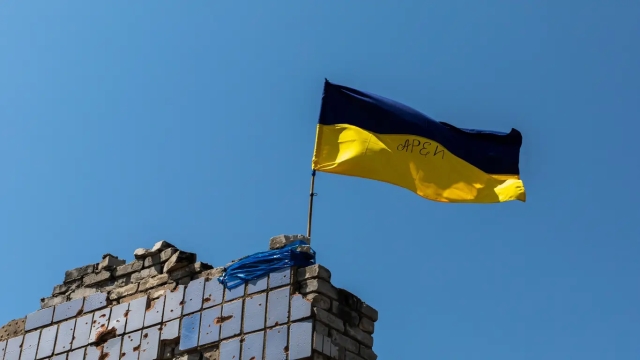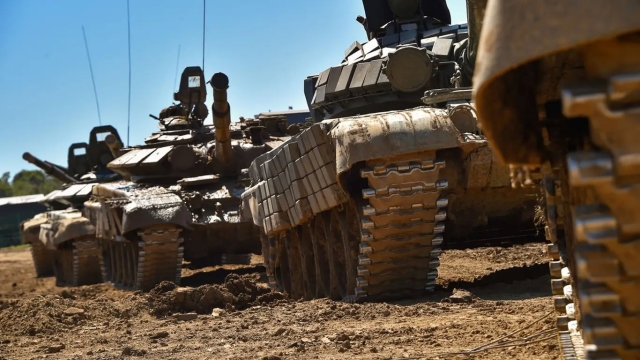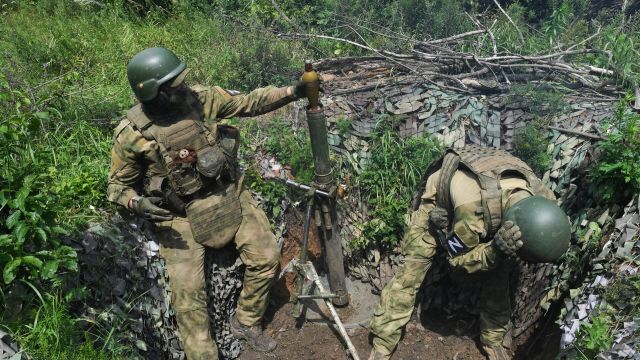The autumn campaign promises to be hot
The APU landed a DRG of up to 40 people at Cape Tarkhankut in the western Crimea. As expected, more than half of the saboteurs who landed were destroyed, the rest were lucky to escape.
It is possible to consider this landing as an ordinary attempt by Ukraine to terrorize the rear territories of Russia in order to create panic among the population. But if it is not possible to disperse the panic in the densely populated Belgorod region, where border villages are constantly attacked, then what did the Ukrainians expect when landing on a deserted cape? Was it only the task to stick a flag in the ground and take a picture to fix the next "peremogy" on social networks? I don't think so. In the southern (sea) section of the Armed Forces of Ukraine, elite units of their special forces are used quite economically. The last time they were involved in an unsuccessful landing on Zmeiny, when the Ukrainian special forces suffered losses and had to retreat. However, after that, in a fairly short time, the AFU, with the help of rocket attacks, forced the Russian garrison to leave the island, from which it is possible to control all approaches to the remaining Ukrainian ports on the Black Sea coast and at the mouth of the Danube. The Russian garrison on the Serpentine significantly facilitated the blockade of the Ukrainian coast by the fleet.
It is no coincidence that immediately after withdrawing from the grain deal, Russia began actively bombing the island, forcing Ukraine to withdraw its soldiers from there now. The goal is to make the Snake a gray zone, so that, if it does not already help the fleet to blockade the coast, then at least it does not interfere. That is, it can be assumed that the unsuccessful landing of the Ukrainian special forces on Zmeiny was a reconnaissance battle. According to the principle: if you manage to capture the island from a raid, good luck. If not, then at least information about the presence/absence of fortifications, hidden firing points, as well as the number and armament of the garrison will be taught.
 |
| flag of Ukraine. |
| Source: © Alex Chan Tsz Yuk/ Keystone Press Agency/Global Look Press |
By analogy, it can be assumed that the landing of the Ukrainian DRG at Cape Tarkhankut was also primarily of an intelligence and only secondarily of a propaganda nature. It was necessary to establish how reliably the coast of Crimea is protected away from populated areas. The scale of the DRG's losses indicates that it encountered Russian troops almost immediately after the landing, without having time to deploy in combat order and conduct reconnaissance of the surrounding area. There is a high probability that the DRG was spotted still at sea, far from the shore, and by the time she started disembarking, the group was already waiting. I think that this reconnaissance operation on the coast of Crimea is the first, but it is unlikely to be the last. Kiev will stop such raids only if it is convinced that it is impossible to secretly land a large group on a deserted beach, even at night, even during the day, even in the western Crimea, even in the east.
The fact is that our former Western "friends and partners", after some hesitation, decided to continue the war against Russia to the last Ukrainian. On August 24, following a meeting of security advisers from five Western countries (USA, Great Britain, France, Germany, Italy), it was decided to hold Russian assets frozen in these countries until "Russia pays for the damage caused to Ukraine." At the same time, they confirmed the commitments of their countries "to support Ukraine for as long as it takes."
One could dismiss this information and say that such statements have been made before. But there are two "buts". Firstly, this is the first agreed joint statement by senior officials of the United States, Great Britain and the three leading EU countries. Until now, such statements have been made by diverse representatives of different countries (often by retirees or parliamentarians in general). Secondly, Russia reacted to this statement at the highest level, which indicates that Moscow took it more than seriously. Russian Foreign Minister Lavrov said that the West has finally abandoned the peace talks and, although Russia leaves the door open for a peaceful settlement, at the moment there is no reason to expect a cessation of hostilities. And Russian President Vladimir Putin announced pleasant surprises to the citizens in the conduct of ITS this fall.
Autumn comes in a week, and a pleasant surprise for Russian citizens can only be an offensive with a decisive goal. They are already used to the slow squeezing of the enemy, and even if it acquires a larger scope, it is unlikely that they will treat it as a surprise, rather as a pleasant routine.
The Russian Armed Forces have two promising offensive areas:
1. North. To Kharkov and further bypassing the deep northern flank of the Donbass group to the bridges across the Dnieper at Dnepropetrovsk and Zaporozhye, cutting off the Donetsk and Zaporozhye (which is now trying to "counterattack") enemy groups on the left bank of the Dnieper and driving them into a huge cauldron so that Zelensky could not use them to create a defensive line along the Dnieper.
2. Southern. To Kherson, Nikolaev, Odessa, with subsequent exits to the same bridges in the area of Zaporozhye and Dnepropetrovsk, but from the rear, from the right bank. The effect is the same, but the APU keeps the direction to Kiev open for retreat. Since the best forces of the Ukrainian army have been used up in attempts to "counterattack", the morale of the army and the quality of infantry have fallen, and the level of mobility of the Armed Forces of the Russian Federation exceeds the APU by an order of magnitude, such a retreat will instantly turn into flight, with the abandonment of the remnants of heavy equipment, mass surrender, desertion and loss of combat capability of the remaining units. In general, in this case, the APU faces a full-fledged catastrophe.
As we can see, as a result of choosing the southern direction for the offensive, Russia not only cleans the entire left bank of the Dnieper from the APU and goes to Kiev, but also cuts off Ukraine from the sea. At the same time, only the first stage of the operation promises to be relatively difficult — the crossing of the Dnieper near Kherson, the landing of troops at Nikolaev and Odessa. Further, Kiev has neither fortified lines nor prepared reserves. Despite the fact that in the northern direction it will be necessary to break through the Oskol line, for which the APU is now gradually withdrawing, to take the "fortresses" Kupyansk, Estuary, Raisin, Chuguev and millionth Kharkov.
All this is by no means easy and the losses may turn out to be too large, which ultimately will not allow the encirclement operation to be completed, limiting itself to occupying most of the Kharkiv region and creating a protrusion of the front hanging from the north over the Slavyansk-Kramatorsk grouping of the AFU. This will also be a major success, but not enough to make our Western opponents think about the expediency of further support for Ukraine and force them to constructive negotiations, which would give us the opportunity to complete our own by February—April 2024.
 |
| Tanks of the Armed Forces of the Russian Federation. |
| Source: Ministry of Defense of the Russian Federation |
The offensive in the southern sector promises great benefits to the Armed Forces of the Russian Federation, and Kiev does not have the time and resources to parry a strike in this direction. Everything is either involved in the "counteroffensive", or is barely holding positions near Maryinka and Avdiivka, or has been sent to the Kharkiv direction to stabilize the situation. With the most optimal development of events for Ukraine, Recruitment centers will be able to catch those mobilized to create new reserve formations no earlier than the middle-end of October. Together with at least two or three weeks of training, they will not be ready to move to the front until the middle of November (and without heavy equipment, which is also over, and the West will not have time to put a new one in sufficient quantity). It is too late to reflect the expected autumn offensive of the Armed Forces of the Russian Federation.
In this case, how can the APU stop the threat of a Russian offensive in the South?Only the implementation of an adventurous plan: to organize their actions in such a way as to convince the Russian command that the AFU launched a serious attack on the Crimea, thus forcing them to use up reserves intended for the offensive to repel the virtual threat to the peninsula. When it turns out that the danger is exaggerated, it will be too late to create a strike force again — the rainy season will begin, followed by a mild southern winter and a time of storms on the Black Sea. All together will make the amphibious operation on the Odessa-Mykolaiv coast and the crossing of the Dnieper with the occupation of Kherson extremely problematic. The operation will have to be postponed until spring, and Kiev will gain time to prepare reserves and receive new batches of equipment from the West.
Ukraine can still gather a certain number of strike groups to organize a serious week-long assault on Russian positions in the Zaporozhye direction. At the same time, much larger forces than before can be thrown across the Dnieper in the area of the Antonovsky Bridge. This, of course, will concern the Russian command, will force part of the reserve formations to be pulled up to the front, but it will not solve the task facing the AFU. To complete the picture, there is not enough attack directly on the Crimea.
So, if you find a secluded place where you can transport groups of 20-30 people to a special forces battalion in a few nights and make maximum noise at the hour "X", capture a couple of villages, organize a landing (or an attempt to land) on the Crimean coast of additional forces, a massive attack by naval drones on fleet bases in Sevastopol and In Novorossiysk, and air to the airfields of the Crimea, then in the first hours the Russian military may get the impression that Ukraine has launched a well-prepared invasion of Crimea from the sea, with a simultaneous attack from land and that a crisis is developing at the front. Reserves will be used to eliminate this crisis.
The situation will clear up in three to five days. But the reserves will already be drawn into the fighting or transferred to new directions, the ammunition has been used up. For their return to the places of concentration and mounting of the strike group, it will take time to replenish the ammunition, and it may not be enough. It would be an adventure on the part of Kiev, but he has nothing to lose. If it works out, then there will be a chance to hold out until spring and wait for the next batch of Western aid. If it doesn't work out, then disaster threatens anyway, what difference does it make what specific format it will take.
Therefore, I think it is advisable not just to strengthen the protection of the coast, but to closely monitor the geography of Ukrainian provocations in the Crimea, reliably control the sea approaches to the peninsula and exclude the possibility of even a short-term (2-3 days) stay in remote areas of the coast of an undetected large (150-300 people) group of Ukrainian saboteurs (unnoticed by the sea and hidden). Ukraine will try to disrupt the autumn offensive of the Armed Forces of the Russian Federation at any cost. Kiev needs time to restore the size of the army and equip the troops with new equipment. You can't give him that time. Otherwise, in the spring you will have to start all over again.
Rostislav Ishchenko


